Protect Yourself With Gloves
Gloves are one of the most important tools in a dental hygienist’s personal protective equipment armamentarium. Brush up on important tips for ensuring your health and safety with drugs with this slideshow.
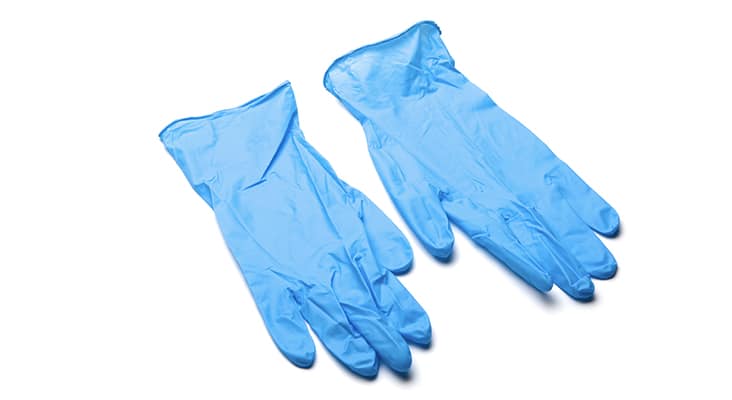
Knowing how to perform proper hand hygiene, choose the right glove, and follow the steps for safe glove use will help keep clinicians and patients safe and healthy. The federal government has created regulations and recommendations to prevent disease transmission and promote safe health-care procedures. The Occupational Safety and Health Administration (OSHA) created the Bloodborne Pathogens (BBP) Standards designed to protect against bloodborne pathogens were finalized in 1991. Infection control in dentistry is largely based on the CDC’s Guidelines for Infection Control in Dental Health-Care Settings—2003. In 2016, a companion document was released that provides a summary of the 2003 guidelines and new recommendations. OSHA and the CDC continue to develop regulations and recommendations to make practice safe for oral health professionals.
Photo Credit: APCortizasJr / E+

Barrier of Protection
In the dental setting, gloves are just one of the types of personal protective equipment (PPE) mandated by OSHA. They are used to protect the wearer and patient from the spread of infection or illness during examinations and other procedures. Gloves provide an essential layer of barrier protection against direct contact with infectious agents that are transmitted during exposure to blood and bloody saliva, contaminated objects, and surfaces.
Photo Credit: Roman Babakin / iStock / Getty Images Plus
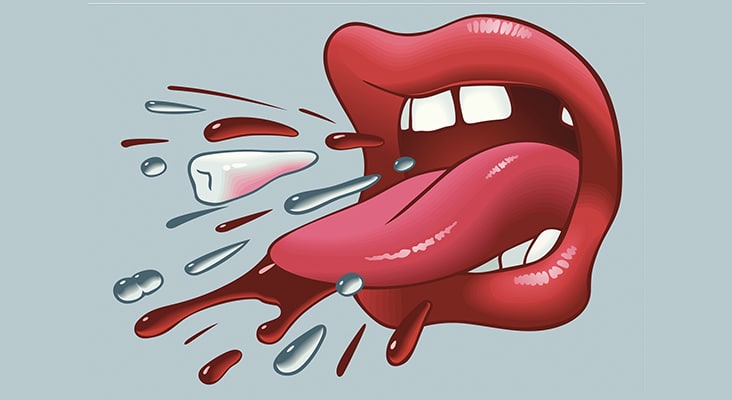
Quality Matters
Glove quality and integrity matter. The US Food and Drug Administration (FDA) regulates the manufacturing and labeling of medical devices, including gloves. It also ensures that performance criteria—such as leak resistance, tear resistance, and biocompatibility—are met. While the efficacy of gloves to reduce BBP transmission has been well established, they do not provide 100% protection. When manufactured, new gloves will experience a small percentage of allowable defects, such as micro-tears, which may allow exposure to blood or bloody saliva. As such, performing hand hygiene after glove removal is imperative. In addition, glove integrity decreases over time, with the incidence of failure increasing between 30 minutes and 3 hours of use. Changing gloves during longer procedures will reduce this risk. In 2016, the FDA banned the use of powdered surgical and patient exam gloves after determining that the powder posed risks to clinicians, including possible airway inflammation, hypersensitivity reactions, granulomas, and scar tissue formation.
Photo Credit: Yuran / iStock / Getty Images Plus
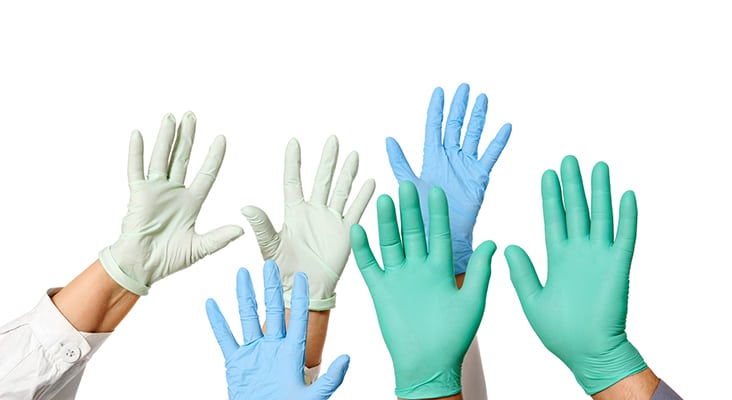
Single-Use Disposable Patient Care Gloves
Exam gloves are used for examining patients and performing procedures that involve contact with mucous membranes. They are not intended for surgical procedures. Surgical gloves are sterile gloves that should be used for all oral surgical procedures. A surgical hand wash must be performed before donning these gloves. Individually packaged pairs are often offered in hand-specific designs and sizes.
Photo Credit: Cimmerian / E+
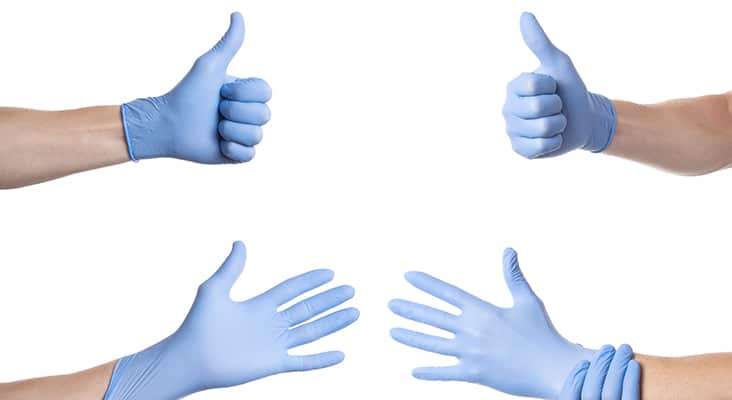
Nonpatient Care Gloves: Utility Gloves
Heavy-duty utility gloves are a vital but often underutilized type of PPE. They are not used for direct patient care. Both OSHA and CDC indicate that chemical- and puncture-resistant utility gloves should be worn when processing contaminated instruments and performing housekeeping duties and tasks involving chemicals. Heavy-duty utility gloves offer significant protection against both percutaneous injury and chemical exposure. Typically composed of nitrile or neoprene, they should be washed and disinfected after use. Some types may be heat sterilized. Oral health professionals should have their own pair of well-fitting utility gloves. Utility overgloves are similar to food-handling gloves. They may be worn over contaminated exam gloves to prevent cross-contamination when clinicians need to handle an item, such as retrieve a hand mirror from a drawer, during patient care.
Photo Credit: Saturn_3 / iStock / Getty Images Plus
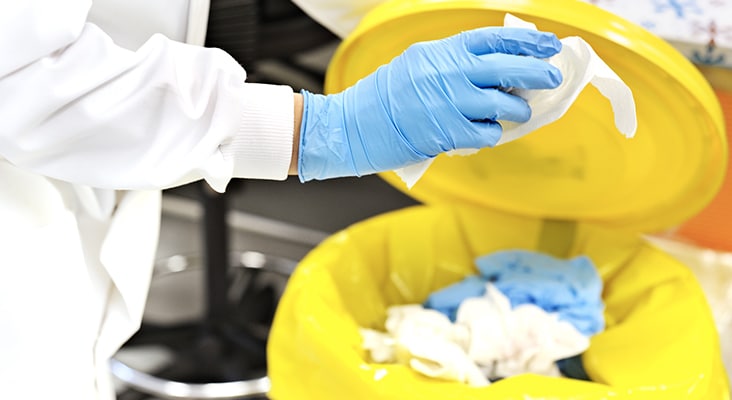
Glove Choice Checklist
Choose the best glove based on the following considerations.
- The task at hand. Gloves should be chosen based on the procedure to be performed (eg, patient exam or surgery)
- Material: latex or nonlatex
- Skin sensitivity: consider latex or nitrile allergies
- Size: Offices should have a variety available
- Fit: a snug but comfortable fit is best. If too large, gloves may impede task performance. If too small, they may cause hand discomfort.
- Ambidextrous or hand-specific gloves: based on clinician preference while considering the length of procedure time
- Tactile sensation: sensitivity should not be significantly reduced. Consider grip, glove thickness, and if the material will be slippery when wet.
Photo Credit: jeangill / iStock / Getty Images Plus

Safety First
Hand hygiene is the most effective way to prevent the spread of infection, thus it must always be done prior to gloving. Routine hand washing with antiseptic hand wash, the use of antiseptic hand rub, or surgical hand antisepsis are all types of hand hygiene. Oral health professionals involved in patient care must be able to perform this task correctly and at the right time. The use of gloves never replaces the need for cleaning hands.
Photo Credit: Aquir / iStock / Getty Images Plus
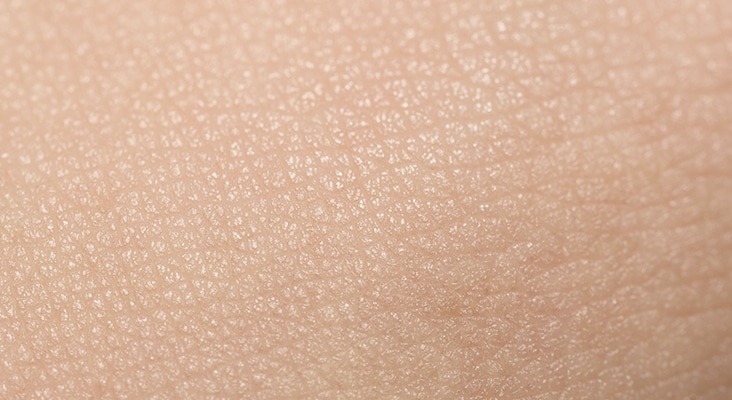
Skin Health
Healthy, intact skin is the best defense against pathogen transmission and infection. Selection and use of appropriate medical grade moisturizers and other hand hygiene products are necessary. In an effort to prevent dryness and contact dermatitis often caused by frequent hand hygiene, clinicians often apply lotions. However, lotions with a petroleum-base can hinder the effectiveness of latex gloves. Therefore, oral health professionals should consider using only water-based lotions during the workday.
Photo Credit: Radu Bighian / iStock / Getty Images Plus
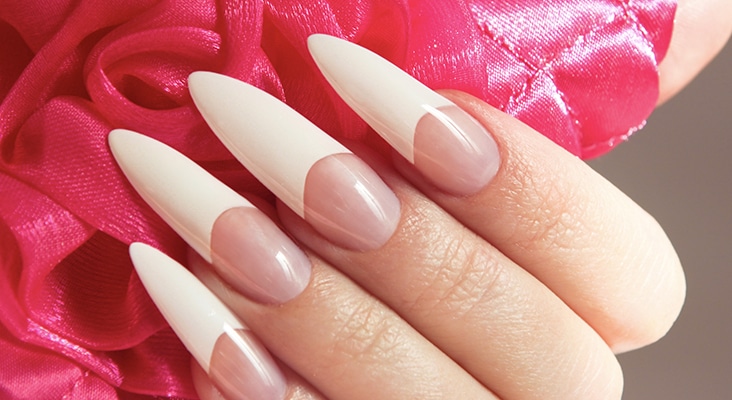
Glove No-Nos
Long nails and hand jewelry can interfere with proper glove selection, cause difficulty when donning, and are likely to create tears and/or punctures. Artificial nails are not recommended as they have been linked to outbreaks of bacterial infections. Natural nail tips should be kept less than a ¼ inch long. Gloves stored in areas with considerable moisture, light, or heat are likely to degrade; shelf life varies by type and manufacturer.

